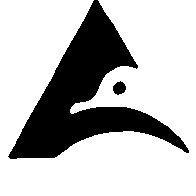Part 108: Exciting changes with the FAA’s Upcoming BVLOS Rule
The drone industry is on the brink of a transformative shift with the anticipated introduction of the Federal Aviation Administration’s (FAA) Part 108 regulations, specifically targeting Beyond Visual Line of Sight (BVLOS) operations.These forthcoming regulations are expected to unlock new potentials for drone mapping businesses, offering a myriad of benefits that could reshape the landscape of aerial surveying and data collection.
Understanding Part 108 and BVLOS
Currently, under Part 107, drone operators are required to maintain visual line of sight with their unmanned aerial vehicles (UAVs) during flight. This limitation restricts the operational range and efficiency of drone missions, particularly in large-scale mapping projects. The anticipated Part 108 regulations aim to establish guidelines for BVLOS operations, allowing drones to operate beyond the direct visual range of the pilot.
Key Features and Expected Provisions of Part 108
While the FAA has yet to finalize Part 108, industry insights and recommendations from the BVLOS Aviation Rulemaking Committee (ARC) provide a glimpse into the potential framework.
-
Acceptable Level of Risk (ALR): The ARC recommends that the FAA set an ALR for UAS operations consistent across all types of operations, aligning with the accepted fatality rates of general aviation. This approach aims to create a common and consistent set of regulations, giving operators flexibility in meeting the ALR through qualitative or quantitative methods. faa.gov
-
Right-of-Way Rules: Modifications to existing right-of-way rules are proposed to accommodate UAS operations in low-altitude areas, both shielded (within 100 feet of a structure) and non-shielded (below 400 feet). These changes would define the responsibilities of UAS and manned aircraft in shared airspace, enhancing safety and operational clarity. faa.gov
-
Operator Qualification: The ARC suggests expanding the knowledge test for the Part 107 Remote Pilot Certificate to cover topics associated with Extended Visual Line of Sight (EVLOS) and shielded UAS operations.Additionally, a new Remote Pilot certificate rating could be introduced to cover more advanced BVLOS operations, ensuring that pilots possess the necessary knowledge and skills. faa.gov
-
UAS and System Qualifications: A process for the qualification of UA and UAS is recommended, applicable to aircraft up to 800,000 ft-lb of kinetic energy. This would involve establishing standards and guidelines to ensure the safety and reliability of drones used in BVLOS operations. faa.gov
-
Third-Party Services: The ARC recommends adopting a non-mandatory regulatory scheme for third-party services used in support of UAS BVLOS operations. This approach would allow for flexibility and innovation in developing services that enhance the safety and efficiency of BVLOS missions. faa.gov
Potential Benefits to the Drone Industry
-
Expanded Operational Range: BVLOS capabilities will enable drone mapping businesses to cover extensive areas without the need for multiple takeoff and landing cycles. This expansion is particularly beneficial for industries such as agriculture, forestry, and infrastructure inspection, where large tracts of land or long linear assets require monitoring.
-
Enhanced Efficiency and Cost-Effectiveness: With the ability to operate beyond visual line of sight, drone missions can be conducted more efficiently, reducing the time and manpower required for large-scale surveys.This efficiency translates to cost savings and the ability to undertake more projects within a given timeframe.
-
Improved Data Accuracy and Consistency: Continuous flights over large areas minimize data inconsistencies that can arise from stitching together multiple datasets collected during separate flights. BVLOS operations facilitate the acquisition of uniform data, enhancing the quality of mapping outputs.
-
Access to Remote and Hazardous Areas: Drones equipped for BVLOS can safely access and survey areas that are challenging or dangerous for human surveyors, such as disaster zones, rugged terrains, or regions with harsh environmental conditions. This capability not only improves safety but also ensures that critical data can be collected promptly.
-
Economic Growth and Job Creation: The integration of BVLOS operations is expected to stimulate economic growth within the drone industry. A study by the Association for Unmanned Vehicle Systems International (AUVSI) projects that the integration of unmanned aircraft systems (UAS) could create over 100,000 jobs and have an economic impact of $82 billion by 2025.
Supporting Studies and References
-
The comprehensive “Unmanned Aircraft Systems Beyond Visual Line of Sight Aviation Rulemaking Committee Final Report” by the FAA provides detailed insights into the recommendations and considerations for BVLOS operations.
-
The DARTdrones article “The Future of Drone Operations: What Part 108 Means for BVLOS and the Industry” discusses the potential impact of Part 108 on BVLOS operations and the broader drone industry. Dart Drones
-
The FlytBase webinar “Master FAA Part 108 & BVLOS Waivers: Webinar Insights” offers an in-depth overview of the anticipated Part 108 guidelines and considerations for BVLOS waiver applications. Flytbase
Conclusion
The forthcoming Part 108 regulations and the facilitation of BVLOS operations represent a pivotal evolution in the drone industry. For drone mapping businesses, these changes herald opportunities for expanded services, increased operational efficiency, and access to new markets. Staying informed about regulatory developments and investing in BVLOS capabilities will be crucial for businesses aiming to capitalize on these advancements.
